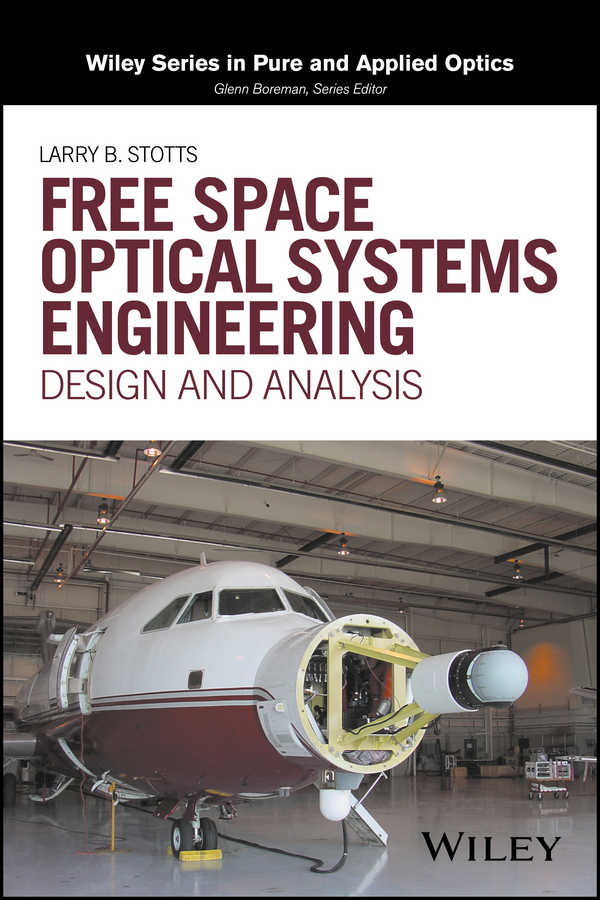Электронная книга: Larry Stotts B. «Free Space Optical Systems Engineering. Design and Analysis»

|
Gets you quickly up to speed with the theoretical and practical aspects of free space optical systems engineering design and analysis One of today's fastest growing system design and analysis disciplines is free space optical systems engineering for communications and remote sensing applications. It is concerned with creating a light signal with certain characteristics, how this signal is affected and changed by the medium it traverses, how these effects can be mitigated both pre- and post-detection, and if after detection, it can be differentiated from noise under a certain standard, e.g., receiver operating characteristic. Free space optical systems engineering is a complex process to design against and analyze. While there are several good introductory texts devoted to key aspects of optics—such as lens design, lasers, detectors, fiber and free space, optical communications, and remote sensing—until now, there were none offering comprehensive coverage of the basics needed for optical systems engineering. If you're an upper-division undergraduate, or first-year graduate student, looking to acquire a practical understanding of electro-optical engineering basics, this book is intended for you. Topics and tools are covered that will prepare you for graduate research and engineering in either an academic or commercial environment. If you are an engineer or scientist considering making the move into the opportunity rich field of optics, this all-in-one guide brings you up to speed with everything you need to know to hit the ground running, leveraging your experience and expertise acquired previously in alternate fields. Following an overview of the mathematical fundamentals, this book provides a concise, yet thorough coverage of, among other crucial topics: Maxwell Equations, Geometrical Optics, Fourier Optics, Partial Coherence theory Linear algebra, Basic probability theory, Statistics, Detection and Estimation theory, Replacement Model detection theory, LADAR/LIDAR detection theory, optical communications theory Critical aspects of atmospheric propagation in real environments, including commonly used models for characterizing beam, and spherical and plane wave propagation through free space, turbulent and particulate channels Lasers, blackbodies/graybodies sources and photodetectors (e.g., PIN, ADP, PMT) and their inherent internal noise sources The book provides clear, detailed discussions of the basics for free space optical systems design and analysis, along with a wealth of worked examples and practice problems—found throughout the book and on a companion website. Their intent is to help you test and hone your skill set and assess your comprehension of this important area. Free Space Optical Systems Engineering is an indispensable introduction for students and professionals alike. Издательство: "John Wiley&Sons Limited"
ISBN: 9781119279037 электронная книга Купить за 10424.97 руб и скачать на Litres |
Другие книги схожей тематики:
| Автор | Книга | Описание | Год | Цена | Тип книги |
|---|
См. также в других словарях:
Optical fiber — A bundle of optical fibers A TOSLINK fiber optic audio c … Wikipedia
Space debris — populations seen from outside geosynchronous orbit (GEO). Note the two primary debris fields, the ring of objects in GEO, and the cloud of objects in low earth orbit (LEO) … Wikipedia
Optical lens design — refers to the calculation of lens construction parameters (variables) that will meet a set of performance requirements and constraints, including cost and schedule limitations. Construction parameters include surface profile types (spherical,… … Wikipedia
Space elevator — A space elevator for Earth would consist of a cable anchored to the Earth s equator, reaching into space. By attaching a counterweight at the end (or by further extending the cable upward for the same purpose), the center of mass is kept well… … Wikipedia
Space Shuttle — STS redirects here. For other uses, see STS (disambiguation). This article is about the NASA Space Transportation System vehicle. For the associated NASA STS program, see Space Shuttle program. For other shuttles and aerospace vehicles, see… … Wikipedia
Space-based solar power — Left: Part of the solar energy is lost on its way through the atmosphere by the effects of reflection and absorption. Right: Space based solar power systems convert sunlight to microwaves outside the atmosphere, avoiding these losses, and the… … Wikipedia
